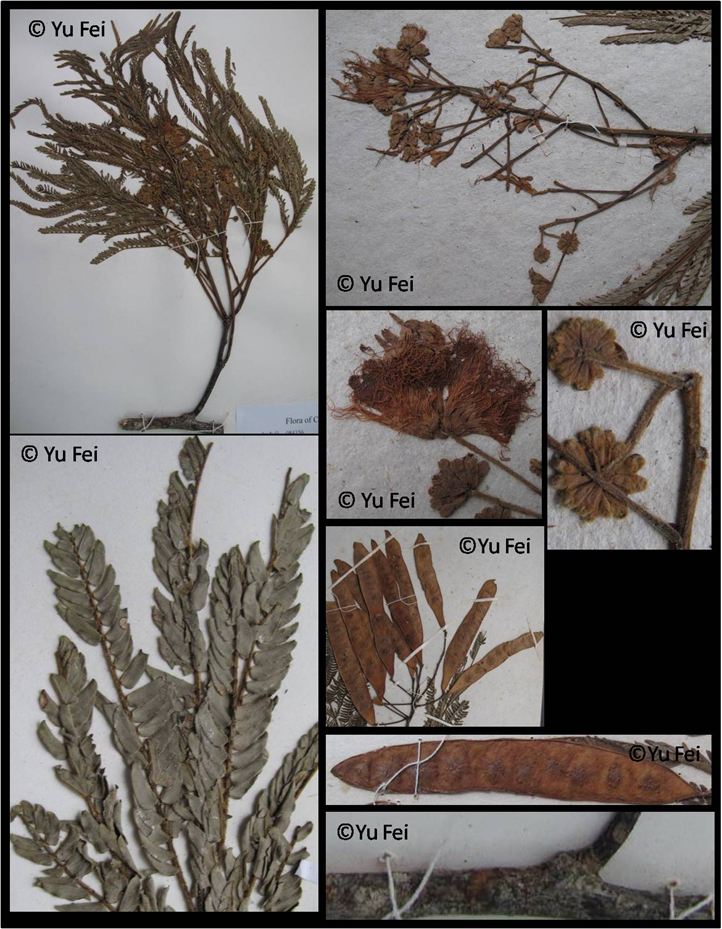Albizia chinensis (Osbeck) Merr., Amer.J.Bot. 3:575 (1826)
Latin for 'from China'.Synonyms
Acacia lomatocarpa Dc., Acacia stipulata DC., Albizia marginata (Lam) Merr., Albizia stipulata (DC.) Boivin,
Arthrosprion stipulatum (DC.) Hassk., Inga purpurascens Hassk., Mimosa chinensis Osbeck, Mimosa marginata Lam.,
Mimosa smithiana Roxb., Mimosa stipulacea Roxb.
Description
Tree to 30(-43) m high, d.b.h. to 70(-140) cm. Branchlets slightly angular in the distal parts, terete, puberulous to tomentose, glabrescent.
Stipules auriculate, c. 1-1.5 by 0.6-3 cm. Rachis 10-25 cm, puberulous to tomentose, a gland c. 1.5-2 cm above the base, elliptic (-suburceolate),
raised, c. 2-3 by 1-1.5 mm; pinnae 4-14 pairs, 4-14 cm, puberulous to tomentose, glabrescent; leaflets (10-)20-31 pairs per pinna, opposite, sessile,
thinly chartaceous. Inflorescences consisting of yellowish-green tomentous to hirsute panicles. Flowers dimorphic, bisexual, pentamerous. Corolla
funnel-shaped, puberulous to hirsute especially on the lobes, 6-10 mm, lobes triangular-ovate, acute, 2-2.5 mm. Stamens withe at base, yellowish green
at top, c. 20mm. Ovary glabrous, c. 3 cm. Pod yellowish-brownish, flat, straight. Seeds elliptic, flattened, c. 7 by 4-5 by 0.5-1 mm in diameter.
Ecology
Secondary forest, moonsoon forest, scrub and grasslands. Altitude up to 1700 m (in cultivation up to 2400 m).
Uses
Commonly cultivated in areas with a seasonal climate; shade-tree in coffee and tea plantations; used for reforestation. Wood light, used for light
furniture and planking.
Distribution
Larger part of mailand SE Asia with seasonal climate: Ceylon, Indo-China, S. China; in Malesia: Java and Lesser Sunda Islands; not found in Malay
Peninsula.
Local names
Yingshu (China).
